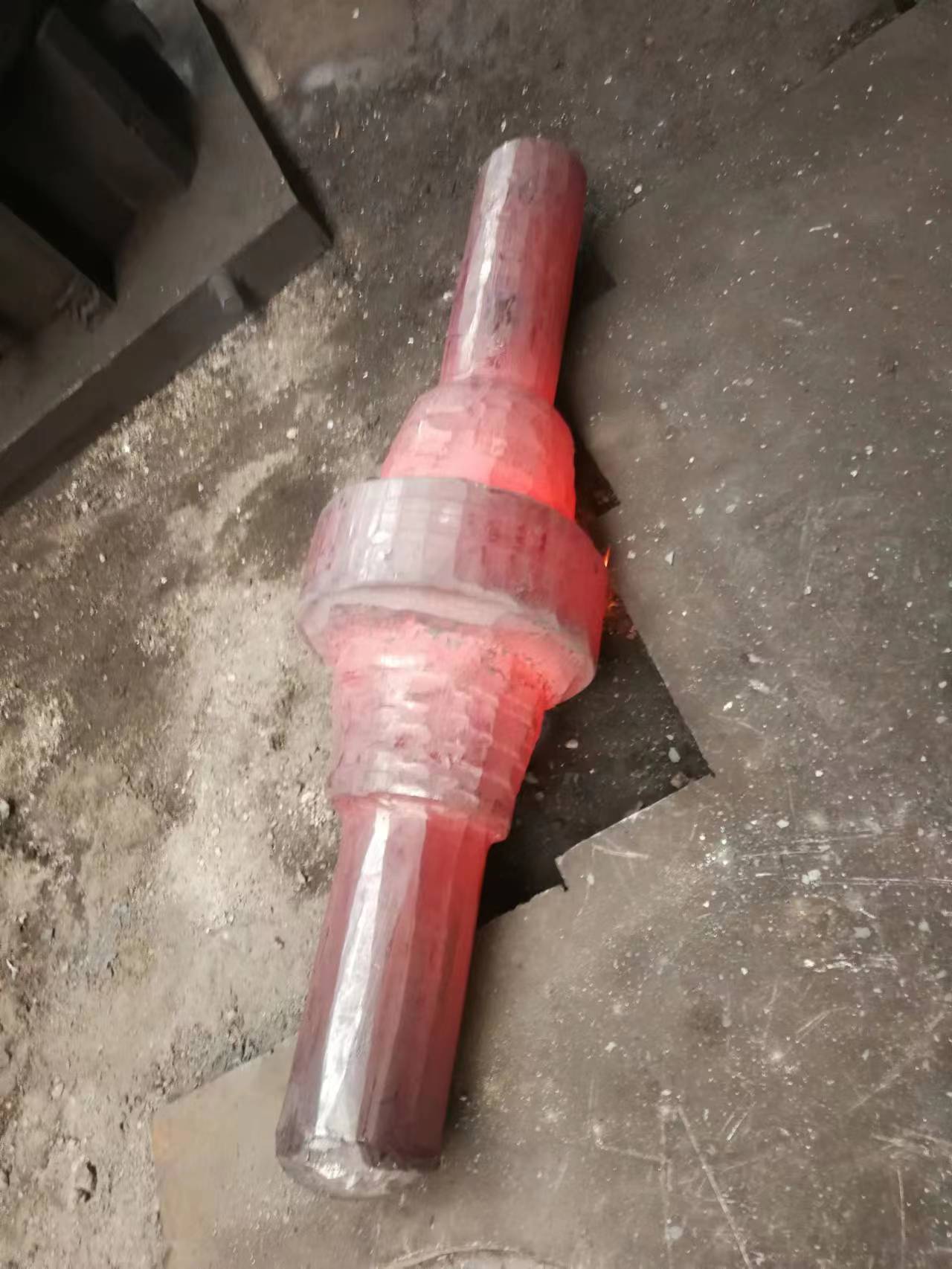What are the factors that affect the internal stress of shaft forging heat treatment?
What are the factors that affect the internal stress of shaft forging heat treatment?
Shaft forging heat treatment may produce three basic types of internal stress, in the actual production, shaft forging always produce two or three basic internal stress at the same time, so the residual stress after the actual workpiece heat treatment is the result of several basic internal stress superposition. The residual stress distribution after superposition is very complicated and closely related to the specific parameters of the heat treatment process. The following is a detailed analysis of the main factors affecting the internal stress of shaft forging heat treatment.
Residual stress in the case of unquenched core. In the case of unquenched core, the internal stress distribution is of thermal stress type, and compressive stress is generated in the surface quenched layer, so the tendency of surface quenched crack is small. However, at this time, the tensile stress is generated in the heart, and when the quenching layer is very deep and the heart is very small, the tensile stress in the heart is very small and the value is very large.
The residual stress in the case of core quenching, when the shaft forging is completely quenched, the distribution of residual stress is mainly the result of superposition of thermal stress and organizational stress. When the diameter of the shaft forging is small, the distribution of residual stress after superposition is the type of organizational stress, indicating that the organizational stress is the main one. When the diameter increases, the residual stress will gradually become the type of thermal stress, which shows that with the increase of the diameter of the workpiece, the role of thermal stress is increasing, then the peak of tangential stress and axial stress appear in the middle part of the shaft forging from the surface of a certain distance, and often the axial stress is greater than the tangential stress, so not too large cylindrical workpiece quenching, often easy to form longitudinal cracks. With the increase of carbon content in steel, the effect of structural stress is enhanced, while the effect of thermal stress is weakened. The addition of alloying elements in steel can not only improve the high temperature strength of steel but also improve the stability of supercooled austenite and reduce the critical cooling rate of steel.
The influence of quenching temperature and cooling rate, the greater the cooling rate, the greater the temperature difference between the inside and outside of the shaft forging, the increase of thermal stress. Because the residual stress of the axial forging is thermal stress type distribution, increasing the cooling rate will increase the compressive stress value of the surface and the tensile stress value of the core. Therefore, the cooling rate should be reduced as much as possible under the condition of meeting the mechanical property requirements.
Under the influence of the center hole, the heat treatment stress of large shaft forgings is generally of the type of thermal stress, that is, the surface is under pressure and the heart is strained. The large shaft forgings of the heart organization is generally relatively poor, metallurgical defects are more, in order to prevent the heart in the heat treatment tensile stress under the action of the further expansion of the defect, and even caused fracture, so generally large shaft forgings in the heat treatment before the processing of the center hole, the part of the defect removed.




